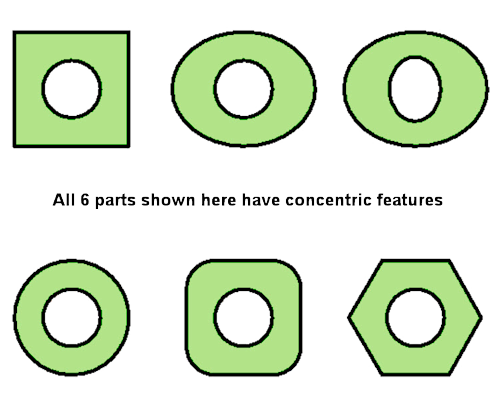
Concentricity, like symmetry, can be very difficult to inspect and usually does not relate to functional requirements.


All of the coaxiality controls are intended to control concentric features. For that reason, many Designers and Engineers choose concentricity. Unfortunately, concentricity ignores the size, roundness and cylindricity of the feature. It requires that the Inspector derive median points. In a situation where you don't care about the size, roundness or cylindricity of the feature, concentricity may be specified. A possible application for concentricity is when dynamic balance is needed. In such a case, however, measuring a part statically does not assure dynamic balance if the material is not homogeneous. If dynamic balance is required, a dynamic balancing note is probably in order rather than concentricity. A good rule to follow on coaxial features is: "When in Doubt, use Runout."

Summary:
- Always RFS
- The datum(s) referenced must establish an axis
- Consider circular runout: runout is easier to verify and runout also controls the form of the feature
- Concentricity is a static attempt at dynamic balancing
